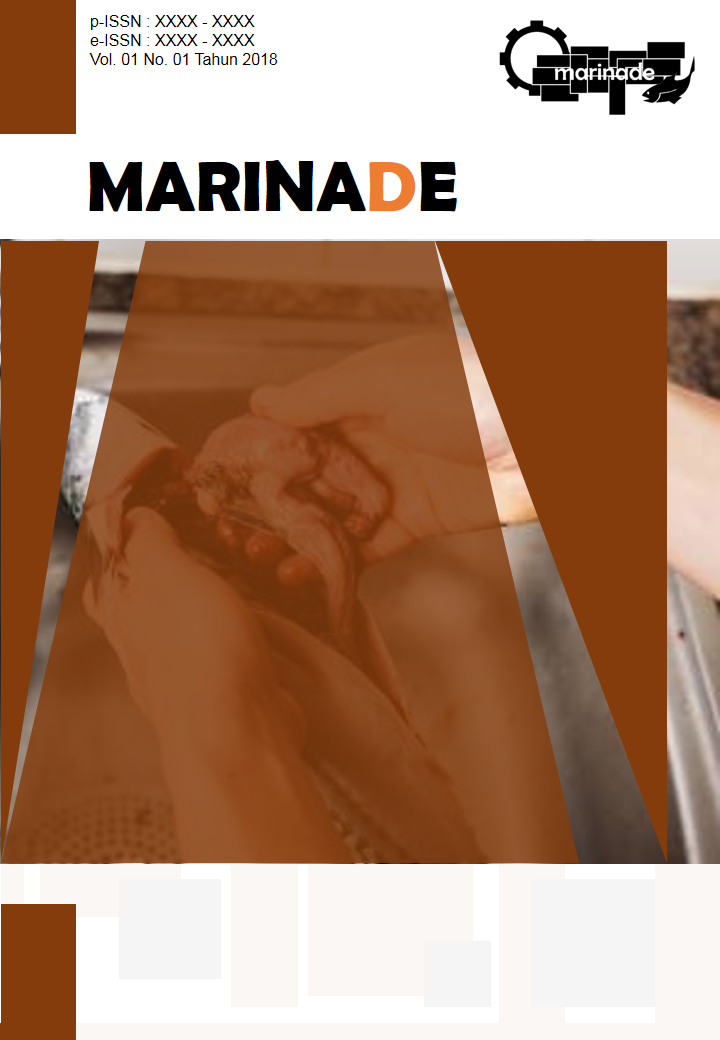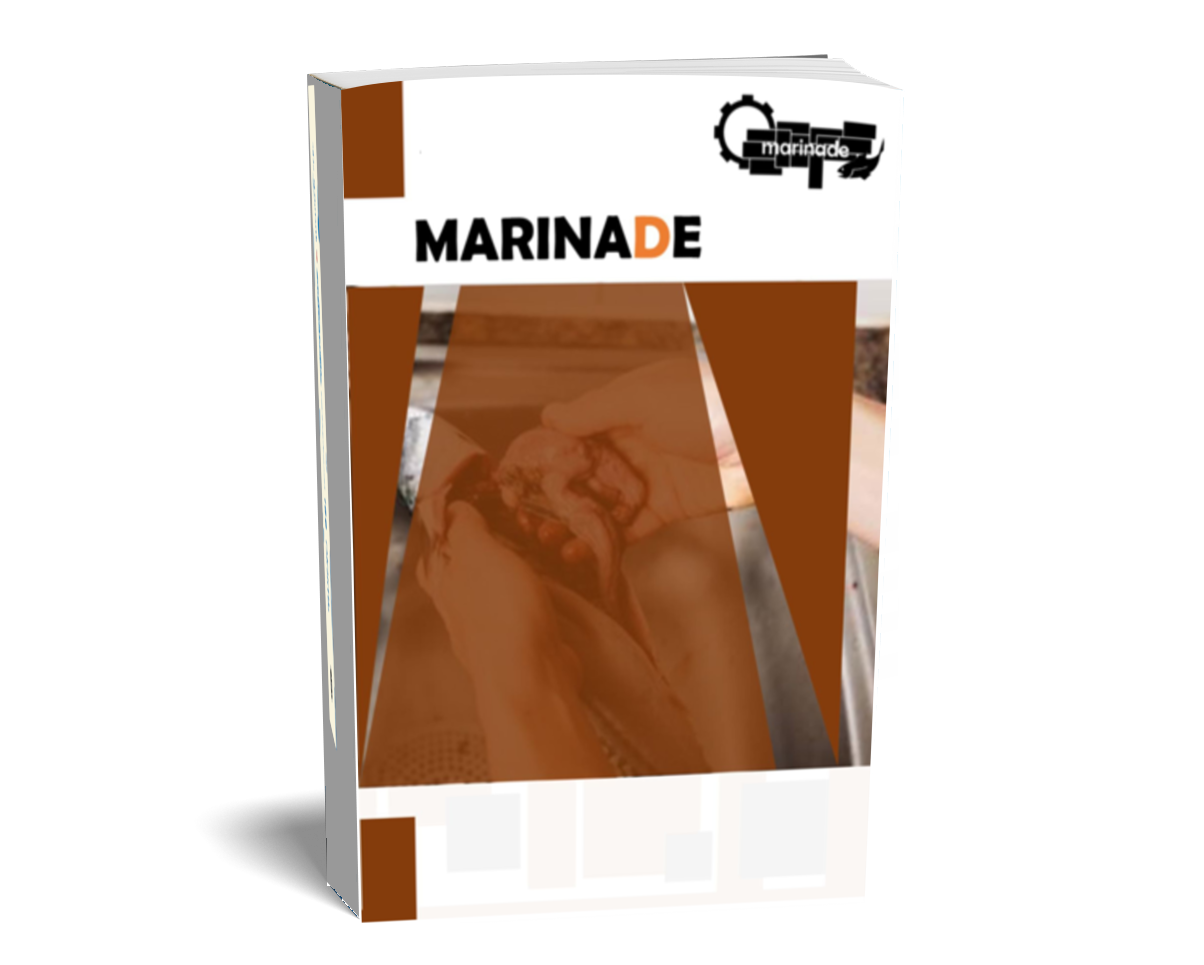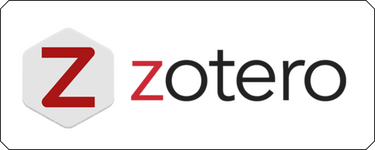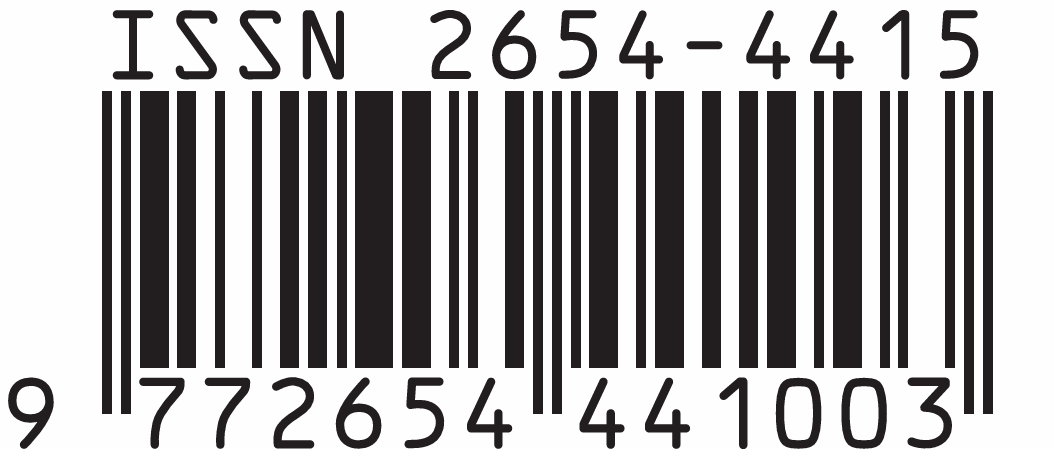IDENTIFIKASI KOLAGEN DARI CANGKANG BULU BABI (Diadema setosum) ASAL PERAIRAN PULAU LEMUKUTAN
DOI:
https://doi.org/10.31629/marinade.v5i02.4916Keywords:
cangkakng bulu babi, identifikasi FTIR, kolagenAbstract
The purpose of this study was to determine the results of the identification of sea urchin collagen
on the quality of the yield produced and the absorption function group of FTIR (Fourier Transform Infra
Red). The results of the analysis of the yield value of collagen extract using hydrochloric acid solvent
concentration of 1 % was 0.49 %, 3 % was 0.76 %, 5 % was 0.62 %. Then additional collagen
extraction was carried out at the concentration with the best results to identify the quality of the
collagen. The identification results in the water content value of 21.31 %, ash content of 42.8 %, and
the results of the FTIR (Fourier Transform Infra Red) wave number for Amide A of 3448.72 cm-1,Amide B of 2924.09 cm-1, Amide I of 1641.42 cm-1, Amide II of 1539.20 cm-1, Amide III of 1228.66 cm
Downloads
References
Alhana,SuptijahP,TarmanK.2015.Ekstraksidankarakterisasikolagendaridagingteripanggamma(Stichopusvariegatus).JurnalPengolahanHasilPerikananIndonesia.18(2):150-161.Huo, J.danZhao,Z.2009.Studyonenzymatichydrolysisof Gadusmorrhuaskincollagenand molecular weightdistributionofhydrolysates.AgriculturalSciencesinChina8. (6):723-729.Kong, J., dan Yu, S. 2007. Fourier transforminfra red spectroscopic analysis of protein secondary structures. Acta Biochimica etBiophysicaSinica. 39(8):549-559.Matmaroh, K., Benjakul, S., Prodpran, T., Encarnacion, A., Kishimura, H. 2011. Characteristics of Acid Soluble Collagen and Pepsin Soluble Collagen from Scale of Spotted Golden Goatfish (Parupeneus heptacanthus). Journal of Food Chemistry.129:1179-1186.Muyonga JH, Cole CGB, Duodu KG. 2004. Fourier Transform Infra Red (FTIR) Spectroscopic Study of Acid Soluable Collagen and Gelatin From Skins and Bones of Young and Adult Nile Perch (Lates Niloticus). The Journal of Food Chemistry.86: 325-332.Nagarajan, M., Benjakul, S., Prodpran, T., Songtipya, P., & Kishimura, H. (2012). Characteristics and functional properties of gelatin from splendid squid (Loligo formosana) skin as affected by extraction temperatures. Food Hydrocolloids. 29: 389-397. Potaros T, Raksakulthai N, Runglerdkreangkrai J, Worawattanamateekul W. 2009. Characteristics of collagen from nile tilapia (Oreochromis niloticus) skin isolated by two different methods. Kasetsart Journal-Natural Science. 43(3): 584-593.Puspitawati, N.M., Simpen, N., dan Miwada, IN.S. 2012.Isolasi Gelatin dari Kulit Kaki Ayam Broiler dan Karakterisasi Gugus Fungsinya dengan Spektrofotometri FTIR. Journal Kimia.6(1): 79-87. Rahmawati, D. 2020. Pengaruh Variasi Jenis Asam Terhadap Produksi Kolagen Berbahan Dasar Tulang Ikan Tongkol (Euthynnus affinis). Skripsi. Malang: Universitas Islam Negri Maulana Malik Ibrahim. Raman, M. dan Gopakumar,K. 2018. Fish Collagen and its Applications in Food and Pharmaceutical Industry. Ec Nutrition.13(12): 752-767. Safithri, M., Tarman, K., Suptijah, P., Sagita, SN. 2020. Karakteristik Kolagen Larut Asam Teripang Gama (Stichopus veriegatus). Jurnal Pengolahan Hasil Perikanan Indonesia. 23(1): 166-177. Schrieber, R., dan Gareis, H. 2007. Gelatine Handbook. Germany:Wiley. Science and Technology of Gelatin. New York (US): Academic Presss.
Downloads
Published
Issue
Section
License
Copyright (c) 2022 Marinade

This work is licensed under a Creative Commons Attribution-NonCommercial-ShareAlike 4.0 International License.
You are free to:
- Share — copy and redistribute the material in any medium or format for any purpose, even commercially.
- Adapt — remix, transform, and build upon the material for any purpose, even commercially.
- The licensor cannot revoke these freedoms as long as you follow the license terms.
Under the following terms:
- Attribution — You must give appropriate credit, provide a link to the license, and indicate if changes were made . You may do so in any reasonable manner, but not in any way that suggests the licensor endorses you or your use.
- ShareAlike — If you remix, transform, or build upon the material, you must distribute your contributions under the same license as the original.
- No additional restrictions — You may not apply legal terms or technological measures that legally restrict others from doing anything the license permits.













